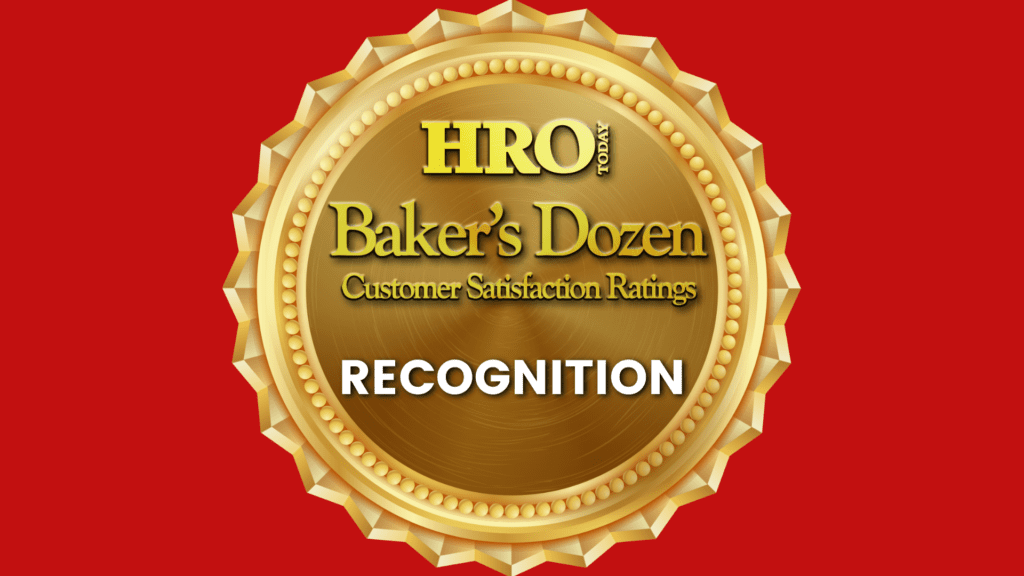Productivity, engagement, belonging, and retention are all key metrics that receive a boost when leveraging these recognition best practices.
By Maggie Mancini
When was the last time employees heard from their managers that they’re doing a good job? Is recognition treated as a priority or an afterthought? Organizations that understand the importance of frequent recognition—occurring at least monthly—can drive business success on many levels. In fact, Achievers Workforce Institute’s latest State of Recognition report finds that organizations that meet this occurrence threshold double employees’ self-reported levels of productivity and engagement, and more than double the rate of their feelings of belonging in their workplace.
“When recognition becomes a regular part of the workplace culture, it ensures employees across an organization feel valued and appreciated,” says Hannah Yardley, chief human resources officer at Achievers.
Frequent recognition can help foster a positive work environment centered around collaboration, innovation, and moving towards shared goals. This positive cycle, Yardley says, not only boosts morale but impacts key metrics like retention rates, customer satisfaction, and profitability. By embedding recognition into the culture, individual contributions are celebrated, and employees feel an enhanced sense of belonging.
“Recognized employees feel valued, which increases engagement and loyalty,” says Kate Devlin, director of human resources at Rymax. “Reducing turnover rates drives business success through a more motivated and efficient workforce.”
Workhuman’s research with Gallup reveals that if a business doubles the number of employees who strongly agree that they receive recognition, they see a 9% improvement in productivity, a 22% decrease in safety incidents, and even a 22% decrease in absenteeism.
“When done right, employee recognition can be more than an employee experience initiative,” says Sarah Hamilton, vice president of human experience at Workhuman. “It can be a true strategic lever that executives can pull to impact the bottom line.”
Strategies to Hit Goals
Research from Achievers identifies several factors of recognition programs that drive business results. These are important because they align recognition programs with organizational goals and employee motivations, Yardley says.
- High-frequency, low-monetary recognition ensures appreciation is authentic. HR leaders can reinforce positive behaviors more effectively than with occasional, more extravagant rewards by acknowledging employees in the moment.
- Accessibility fosters inclusivity. By making access to the recognition program available to all employees—regardless of role or location—HR leaders can encourage employees to participate.
- Promotion through multiple channels encourages awareness and participation. Leaders can help align the values of recognition to their organizational culture by embedding the program into the organization’s daily operations.
- Tying recognition to performance metrics is paramount. Measuring business outcomes is particularly important because leaders can demonstrate the impact of recognition on key results which can then be communicated to other business leaders in the organization. Visibility into the impact on business outcomes also guarantees that HR leaders are aware if their recognition strategy is falling flat.
- Personalized rewards support belonging. Giving employees choice around how they are recognized—whether it be in an all-hands meeting, during a one-on-one with a manager, or within a social media-like interface—HR will provide moments that are meaningful to them.
Devlin says that HR leaders should integrate recognition deeply into their company’s values, mission, and vision. In addition, Devlin recommends following these strategies to create a motivated, engaged, and high-performing workforce that contributes to organizational success.
- Involve leadership to demonstrate commitment and communicate goals.
- Integrate recognition with performance management for continuous feedback.
- Use data to track the impact on productivity, engagement, and retention.
- Foster a culture of recognition throughout the organization.
- Personalize recognition efforts to suit individual preferences.
- Communicate success stories to reinforce desired behaviors.
Identifying values to build an employee recognition program around is key to making sure HR leaders are aligning with business goals, Hamilton says. For instance, if burnout-driven turnover has been a major challenge, a well-being award could be an important part of the recognition program. When employees are seen making healthy choices or putting up healthy work boundaries, HR leaders can reinforce that immediately.
Leveraging the Manager-Employee Relationship
The manager-employee relationship is paramount in fostering the type of recognition that will have an impact on the business, Yardley says. Managers are on the frontlines of day-to-day operations with their teams, so they have the ability to provide ultra-personalized recognition. Managers are also a bridge between upper management and staff, Devlin says, which grants them substantial influence in fostering workplace engagement.
“Positive manager-team relationships enable timely, personalized recognition that inspires peak performance,” Devlin says. “Managers reinforce desired behaviors and enhance performance by aligning recognition with organizational goals and offering constructive feedback.”
But it appears that this is an area for improvement for some organizations. In fact, Workhuman’s study with Gallup reveals that 40% of employees receive recognition from their manager a few times per year or less. Those employees are five times as likely to be actively disengaged, 74% more likely to say they don’t plan to be at their organization in a year, and 27% more likely to be struggling. All these employee-specific problems feed into larger issues that impact culture and business goals, Hamilton says.
“Middle managers are the connective tissue that knits an organization together, and they have the power to make or break their direct reports’ experience at the organization,” she says. “While there’s no right way to be a manager, employee recognition is a way to make sure that employees are rewarded for their effort, feel connected to business goals, and have the sense that they’re coming to a place that values them as individuals and sees the work they put in every day.”
Taking a strategic approach to recognition means that HR leaders need to be able to evaluate results and measure them against key business goals, Hamilton says. Data and insights from recognition programs and platforms often offer a clear and actionable way to evaluate overall effectiveness.


















